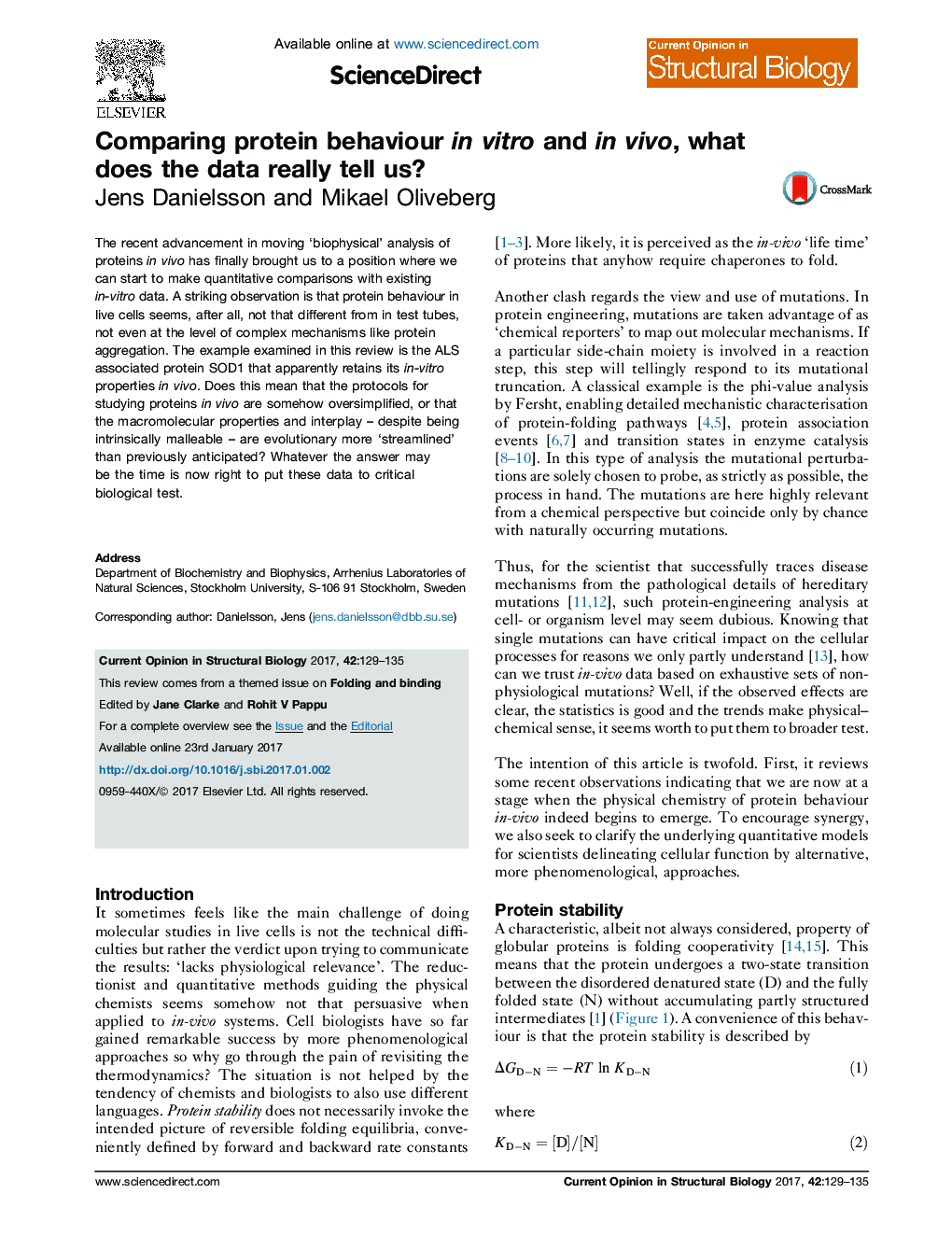| Article ID | Journal | Published Year | Pages | File Type |
|---|---|---|---|---|
| 5510880 | Current Opinion in Structural Biology | 2017 | 7 Pages |
â¢Quantitative studies of proteins can now be done at atomic resolution in live cells.â¢In vitro folding behaviour and exponential aggregate growth persist in vivo.â¢The consistent and mechanistically revealing in-vivo influence is quantifiable.â¢How do we convey reductionist/quantitative results to a phenomenological field?
The recent advancement in moving 'biophysical' analysis of proteins in vivo has finally brought us to a position where we can start to make quantitative comparisons with existing in-vitro data. A striking observation is that protein behaviour in live cells seems, after all, not that different from in test tubes, not even at the level of complex mechanisms like protein aggregation. The example examined in this review is the ALS associated protein SOD1 that apparently retains its in-vitro properties in vivo. Does this mean that the protocols for studying proteins in vivo are somehow oversimplified, or that the macromolecular properties and interplay - despite being intrinsically malleable - are evolutionary more 'streamlined' than previously anticipated? Whatever the answer may be the time is now right to put these data to critical biological test.
